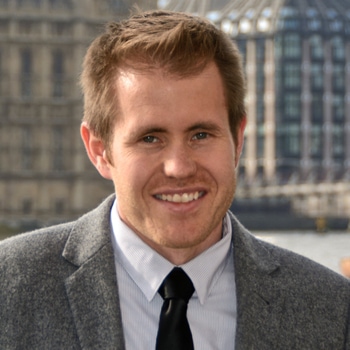Location
NCRC, B20 212W
2800 Plymouth Rd
Ann Arbor, MI 48109
Phone
(734) 881-4165
Primary Website
Education
Dr. Nordsletten received his Bachelor’s in Biomedical Engineering and Mathematics at the University of Minnesota and DPhil at the University of Oxford. Following his Ph.D., Dr. Nordsletten spent one year as a post-doctoral researcher and research assistant splitting time between the Massachusetts Institute of Technology and the University of Oxford.
Research Interests
Research in the Nordsletten lab focuses on the novel application of biomechanics integrated with magnetic resonance imaging (MRI) for the advancement of human cardiovascular health. This broad focus encompasses a range of projects spanning from numerical methods development through to direct analysis of medical imaging data for diagnostics in cardiovascular disease. Our broad target is to improve diagnosis and treatment in heart failure and cardiovascular disease; two conditions that present a significant burden to healthcare systems around the world.
Personalized Biomechanical Modeling: One goal of our research team is to enable the effective planning of clinical procedures in patients through the use of personalized biomechanical models. These mathematical models can be personalized to match the geometry, motion, and behavior of a patient’s heart, enabling a virtual clone that can be used to assess device and surgical therapies. Simulations of the patient’s heart, examining the biomechanics and electrophysiology within the muscle tissue as well as blood flow through the heart, can be used to gauge the efficacy of therapy. While surgical procedures or treatments may be difficult to experiment with, these models can be used to provide a predictive platform for therapy planning and optimization.
Growth and Remodeling in Cardiac Tissues: The heart is under a constant state of adaptation in response to changes in demand and load. This adaptation plays a critical role in the progression of pathology as well as acts as a key component in repair. Despite the importance of these mechanisms, they remain poorly characterized and limit the efficacy of long-term therapy prediction. Using a combination of analysis at the tissue scale, experiments in animals, and acquisition in human patients, our team aims to better understand these mechanisms and improve our clinical understanding of long-term adaptivity in the heart.
Multiscale Viscoelastic Rheology of Cardiac Muscle: Cardiac tissue relies on a complex hierarchy of structure and function relationships to effectively deliver blood throughout the body. Our team is aiming to better understand the factors that influence this relationship. Using a multiscale viscoelastic approach, we are using classic rheology and magnetic resonance elastography to better understand the characteristics of cardiac tissue.
Relative Pressure Estimation from Phase Contrast MRI: The drop in pressure through the cardiovascular system is one of the key indicators used to grade the severity of diseases, such as aortic stenosis and left ventricular outflow tract obstruction. Obtaining these measures accurately and with non-invasive measures is critical to improving patient diagnosis and care. Using fluid dynamics principles, turbulence analysis, and four-dimensional phase contrast magnetic resonance imaging, our team is identifying new robust ways to compute these measures from images.
Fluid-Structure Interaction: As a highly dynamic pump, the heart relies on the effective synchrony of tissue contraction, relaxation, and valve function to shift flow between its chambers. Understanding how alterations in hemodynamics or tissue mechanics impact one another is critical for understanding specific cardiac and valve diseases. Our team aims to produce computational tools that enable the effective simulation of these complex scenarios.
Research Areas:
Biofluids, Biomechanics, Biomedical Computation and Modeling, Biomedical Imaging, Biomedical Imaging and Optics, Cardiovascular, Organ and Whole Body Mechanics
Biography
In 2010, Dr. Nordsletten started a faculty position as an Assistant Professor at King’s College London. He joined the University of Michigan in January 2019 as an Associate Professor and is a Reader in cardiovascular biomechanics at King’s College London.
Awards
- EPSRC HTCA leadership fellowship
